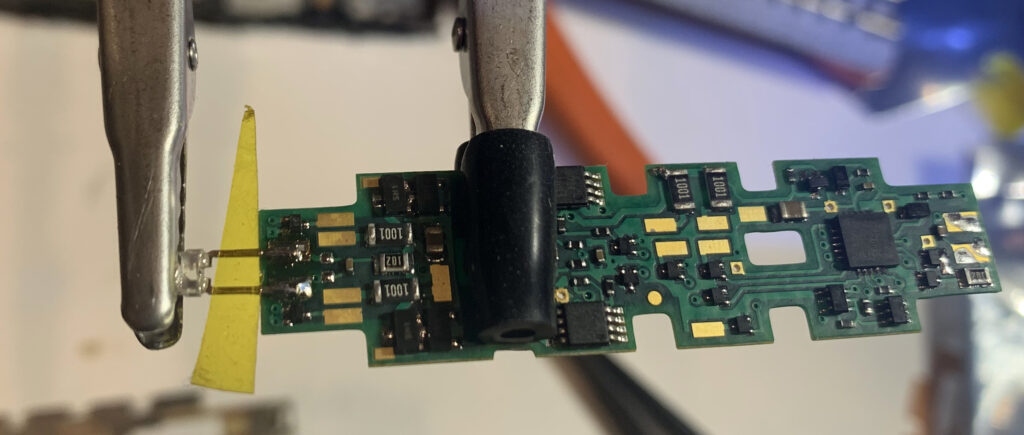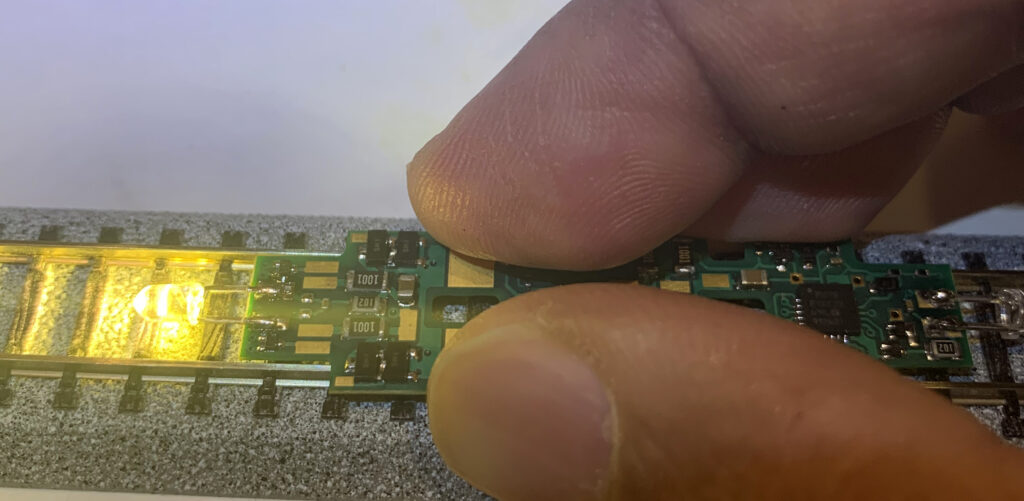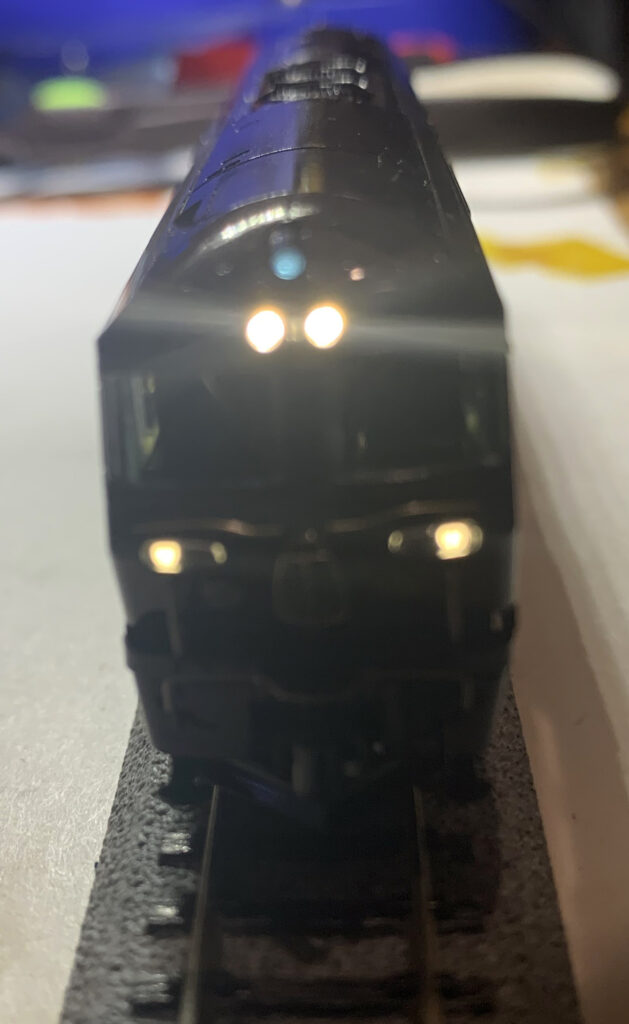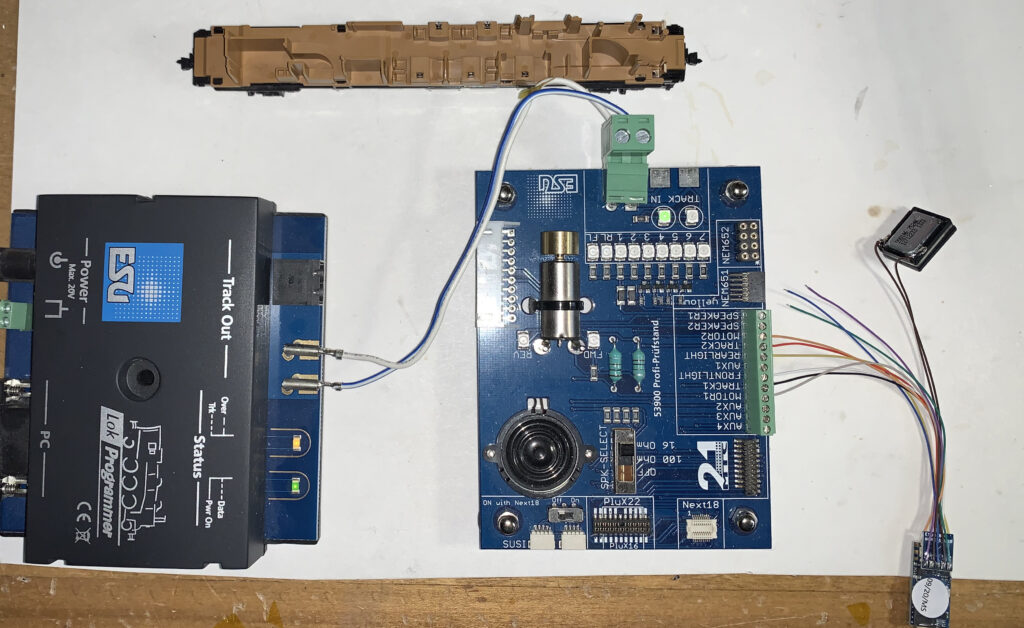This beautiful iconic Japanese Train is a masterpiece of modeling.

Despite the tight space luckily the DCC Mod is not super hard, just a few tricks. Sound … maybe will add that in another car (to be decided).
Opening the case is easy:

The decoder to use is the TCS K0D8 Series. I had the K0D8-B with me. Like the F7 install, remove the grey clip, slide the board to the front of the loco and lift. The LED on the front of the K0D8 is too long, it has to be desoldered and cut to match the size








Here we go – sound installed in car 3

